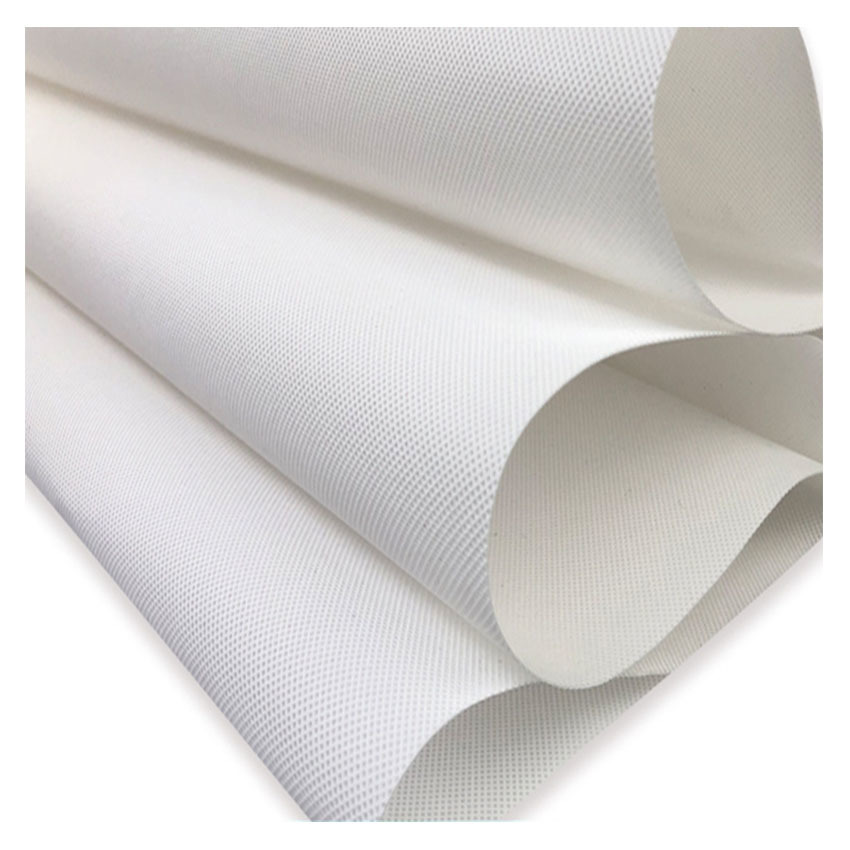
Non-Woven Industry Development. Nonwoven fabrics are the result of the petrochemical industry following the creation of plastic cloth (film). It is lighter and more ventilated than plastic cloth. It is commonly used in medical and hygiene products like facial napkins and sanitary napkins. towels. Later, engineering was applied to it. Non-woven fabric protects the crops of vegetables from damage from cold. The manufacturing process of non-woven fabric differs from plastic film, but the fundamental raw materials are nearly the same. It includes PE (polyvinylchloride), EVA(Ethylene Vinyl Acetate Copolymer) EVA/polyethylene and PVA/polyvinylether. Traditional plastic film is formed into a thin film by melting the plastic and inflating it. The film is continuous. It is able to stretch for a long time. The film is completely porous. It is totally inert, and it blocks all movements and exchanges of molecules. The market for textiles was growing rapidly and artificial chemical fibers made of the mentioned materials became well-known. They are transformed into cloth using traditional warp and weft weaving. Non-woven materials are produced by intersecting fibers on the same plane at various angles in every direction instead of traditional warp and weft techniques. It is more robust than traditional woven fabrics and can be produced from raw materials in one day. This is a superior alternative to weaving which involves drawing fibers. Recent years have seen a wide range of non-woven fabrics being used in the apparel industry. Thanks to advances in material science as well as the advancement of production technology non-woven fabrics have become more varied and is utilized more extensively. Every day we come across various products and materials. The increasing use of non-woven fabrics in agriculture is due to their lightweight, simple production, low-cost, diversity, and wide range of applications. Follow this non woven weed fabric for more information.

Non-woven Fabrics are used in the Agricultural Industry. Non-woven fabrics first came into use in Europe in 1978. They were used to keep carrots warm in the early stages of harvesting, and to prevent the spread of tomato leaf virus and whiteflies. Non-woven fabric can be used to mulch tomatoes, sweet peppers, sweet potatoes as well as carrots, root vegetablesand and carrots. They also assist in the growth of other vegetables such as cabbage, lettuce and radishes. They are used to conserve temperatures, facilitate early harvesting, and to control insects. Non-woven materials are commonly used as surface covers for grass-proof mats. Short fibers are also utilized for the creation of water-absorbing blankets. These are placed on nursery beds in order that the roots will completely absorb any water. They can also be used as the base medium for turf production or as garden grassland to moisturize, drain, and divide the garden. They also serve as planters for large woody plants such as garden trees and fruit trees to prevent weeds from growing and also for retaining water. Non-woven fabrics, which are not woven, are used in Taiwan to cover crops. Non-woven fabrics are used extensively in large greenhouses to aid in energy conservation and environmental control. Canopy curtains have two layers and cut down heat absorption and radiation in the evening. To shade and protect bulbs of cauliflower, high-density non-woven spun-bonded TAVIK fabrics were utilized. Its low thermal conductivity, high shading ability and easy recycleability soon made it popular among farmers. Then, it was gradually used to heat preservation and insect-proof cultivation of leaf vegetables. It also served as a shade, heat preservation and cultivation for pineapples and fruit trees. However, due to the unique climate and ecology of Taiwan, the development of the non-woven sector has been slow. Taiwan's non-woven fabric producers continue to develop non-woven technologies. Their main focus is the permeability of air and water as well as water repellency. The focus is now on the preservation and storage for agricultural products. Look at this agriculture non woven fabric for recommendations.
